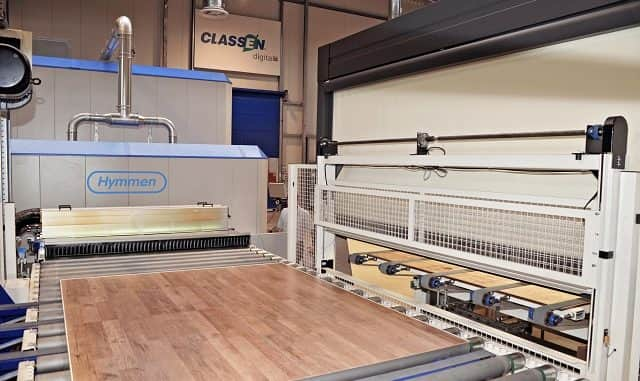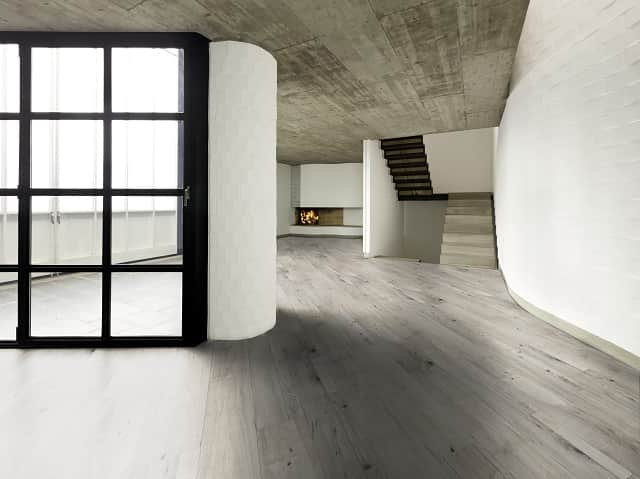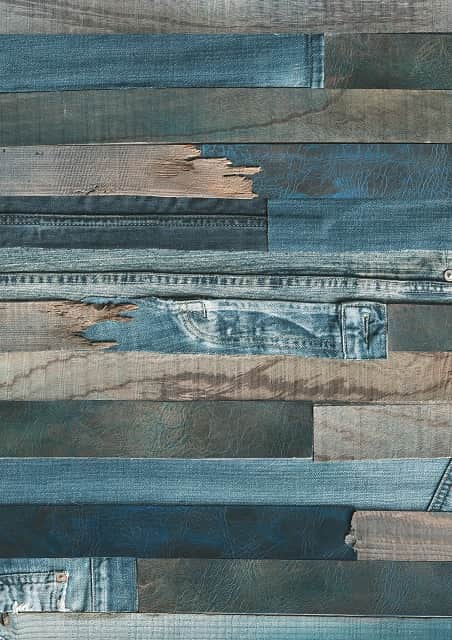
“Those who invented laminate can reinvent it over and over again” – this is the positive, confident motto used by the players in the EPLF, the Association of European Producers of Laminate Flooring. For four decades, they have constantly combined modern technologies with creative ideas in order to develop new generations of laminate that are superior to their predecessors in every case. And now, digital printing is proving to be a major innovation driver for the European flooring industry and its suppliers.
Ever since the first laminate floor covering was developed by a Swedish company in 1977, European specialists have consistently provided key impetus for innovation. They have gained huge experience over four decades and this has helped them to follow new paths and to make each new generation of product a little better than the one before. The first directly-coated laminate flooring (DPL, Direct Pressure Laminate) entered the German market at the end of the 1980s. The excellent value for money secured a global triumph for European laminate and was also the reason why manufacturers increasingly became involved with this flooring and were able to continue developments. The surface appearance of European laminate floors experienced a significant leap in quality in the 2000s when synchronous pore printing (EIR, or Embossed In Register) was developed. While DPL laminates still had a relatively smooth surface, their realistic appearance and tangible feel improved their sensory impression; the wood textures and realistic “V” grooves heightened the feel of real wood. As a result, European laminate became the master of the rustic furnishing style. Tile effects, which were becoming increasingly popular, also became more realistic through the use of synchronous pore printing.
 A few years later, indirect gravure printing (i.e. direct printing) came into use as a quick production process for high-quality multi-colour printing. For the first time, the decorative surface could be applied directly to the HDF core using four-colour printing – without the use of decorative paper. This had the effect of bringing more warmth to the surfaces of the boards and a new level of authenticity to its look and feel, whilst reducing the electrical surface resistance. At the same time, this innovative printing technique meant that long plank dimensions could be produced whilst avoiding pattern repeats. The attractive wood effects with their natural colouring and textures could be shown to their best advantage on these generously-sized planks. Laminate collections were thus enhanced and offered even greater scope for interior design.
A few years later, indirect gravure printing (i.e. direct printing) came into use as a quick production process for high-quality multi-colour printing. For the first time, the decorative surface could be applied directly to the HDF core using four-colour printing – without the use of decorative paper. This had the effect of bringing more warmth to the surfaces of the boards and a new level of authenticity to its look and feel, whilst reducing the electrical surface resistance. At the same time, this innovative printing technique meant that long plank dimensions could be produced whilst avoiding pattern repeats. The attractive wood effects with their natural colouring and textures could be shown to their best advantage on these generously-sized planks. Laminate collections were thus enhanced and offered even greater scope for interior design.
The flooring industry is currently experiencing another technological boost: the digital revolution is covering all aspects of the development, production and marketing of laminate, and changing them forever. This poses new challenges for every player in the field, as the implications of digital printing extend far beyond mere technical implementation. The potential switch from centralised to decentralised production could result in ideas for new sales and business models. The skill and expertise of decor printing companies gained from gravure printing will remain crucial for digital printing, because their in-depth knowledge will ensure that digital decor print files will meet the high quality standards required for print image and colour rendering.
By introducing industrial digital printing in their laminate flooring production, European producers and their suppliers are setting new standards. It’s thanks to digital printing that “endless decors” can be manufactured for the laminate industry. A greater variety of products is possible due to a free choice of sizes and the far greater choice of colour variations within the collections. The visual appearance and feel of the surfaces can be varied further by using textured 3D surfaces or “fully synchronised pores”. In the supply sector, profile manufacturers have obviously been taking advantage of digital technology for some time now when printing customer-specific decors on various core materials such as wood, plastic and aluminium.
 Three-dimensional surface structures can also be achieved with digitally printed decors, for the most part using analogue processes. As an alternative to the classic melamine coating system, a new, compressible UV lacquer coating system has recently been developed which uses the laminate producer’s existing press plates. The digitally printed core boards are treated with a wet lacquer film and are then transported directly into a high-speed press with press plates to give them the required texture. Immediately after the pressing process, the surface structure is fully cured within a very short time using a conventional UV lamp. After cooling, the plates can immediately be used for further processing. System designers have pointed out that surfaces produced in this way have a warmer feel and have superior impact and footfall sound properties compared with conventional melamine surfaces, and that they are very resistant to scratches, scuffing and chemicals.
Three-dimensional surface structures can also be achieved with digitally printed decors, for the most part using analogue processes. As an alternative to the classic melamine coating system, a new, compressible UV lacquer coating system has recently been developed which uses the laminate producer’s existing press plates. The digitally printed core boards are treated with a wet lacquer film and are then transported directly into a high-speed press with press plates to give them the required texture. Immediately after the pressing process, the surface structure is fully cured within a very short time using a conventional UV lamp. After cooling, the plates can immediately be used for further processing. System designers have pointed out that surfaces produced in this way have a warmer feel and have superior impact and footfall sound properties compared with conventional melamine surfaces, and that they are very resistant to scratches, scuffing and chemicals.
Digital printing for laminate floor production is evolving and making significant advances. That’s why the experts at the EPLF are confident that this technique will be a key determining factor in the flooring sector for the immediate future, although it seems rather unlikely that digital printing will ever completely replace classic gravure printing. The two technologies can satisfy different requirements and sales channels, so they are more likely to exist side by side for the foreseeable future. What is evident is that digital printing extends printing capabilities.
